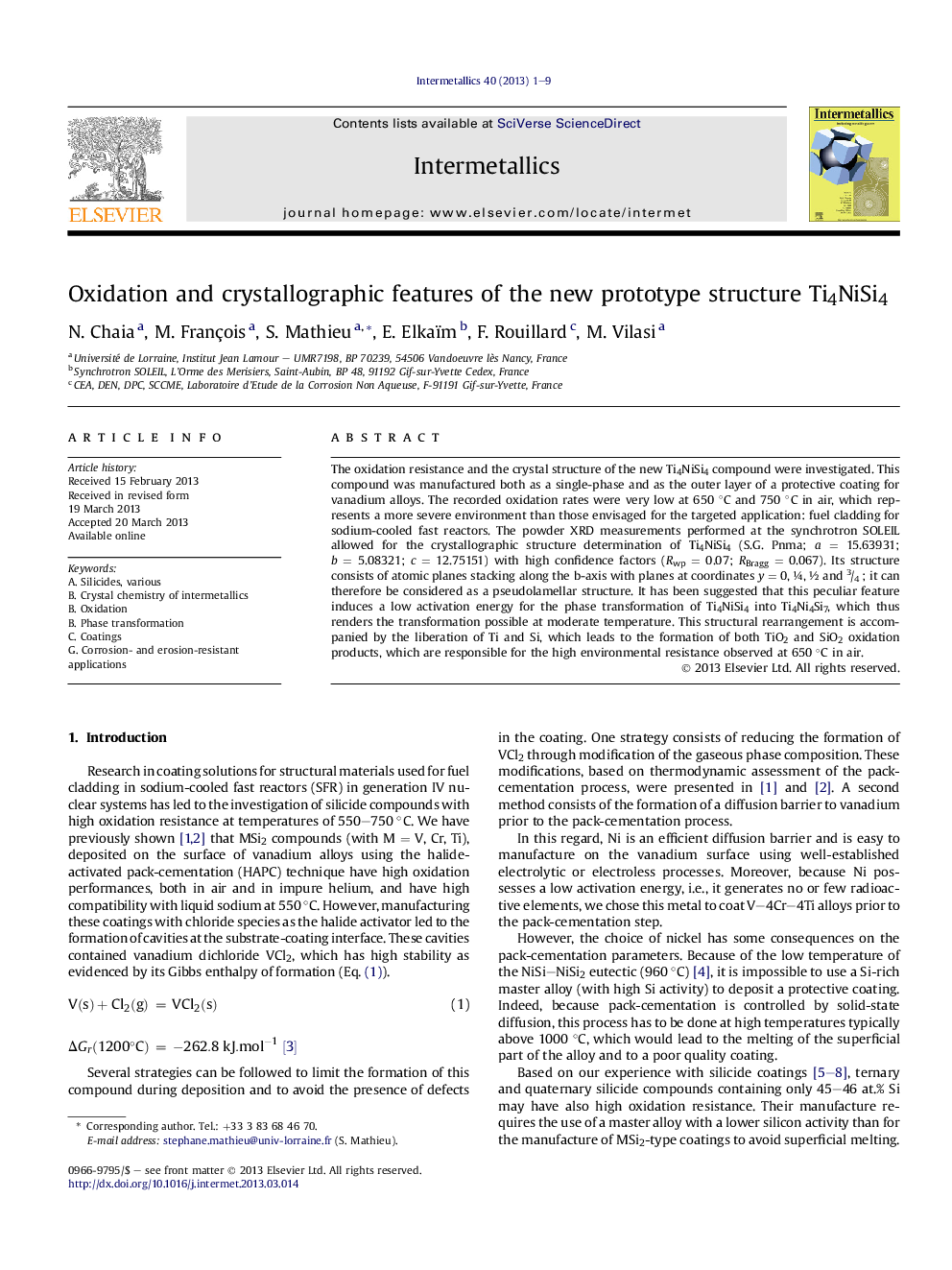| Article ID | Journal | Published Year | Pages | File Type |
|---|---|---|---|---|
| 7988781 | Intermetallics | 2013 | 9 Pages |
Abstract
The oxidation resistance and the crystal structure of the new Ti4NiSi4 compound were investigated. This compound was manufactured both as a single-phase and as the outer layer of a protective coating for vanadium alloys. The recorded oxidation rates were very low at 650 °C and 750 °C in air, which represents a more severe environment than those envisaged for the targeted application: fuel cladding for sodium-cooled fast reactors. The powder XRD measurements performed at the synchrotron SOLEIL allowed for the crystallographic structure determination of Ti4NiSi4 (S.G. Pnma; a = 15.63931; b = 5.08321; c = 12.75151) with high confidence factors (Rwp = 0.07; RBragg = 0.067). Its structure consists of atomic planes stacking along the b-axis with planes at coordinates y = 0, ¼, ½ and ¾; it can therefore be considered as a pseudolamellar structure. It has been suggested that this peculiar feature induces a low activation energy for the phase transformation of Ti4NiSi4 into Ti4Ni4Si7, which thus renders the transformation possible at moderate temperature. This structural rearrangement is accompanied by the liberation of Ti and Si, which leads to the formation of both TiO2 and SiO2 oxidation products, which are responsible for the high environmental resistance observed at 650 °C in air.
Keywords
Related Topics
Physical Sciences and Engineering
Materials Science
Metals and Alloys
Authors
N. Chaia, M. François, S. Mathieu, E. Elkaïm, F. Rouillard, M. Vilasi,
